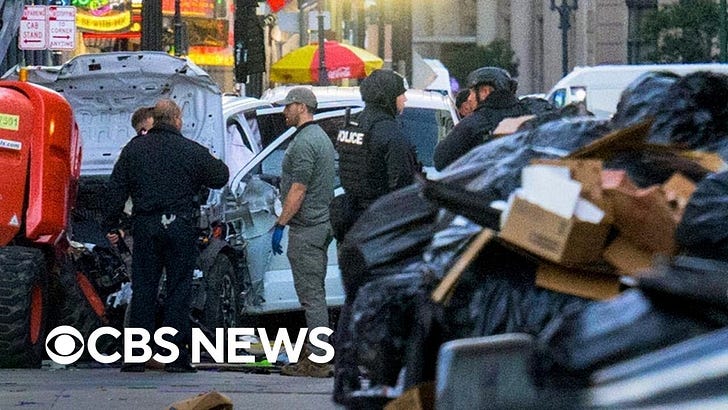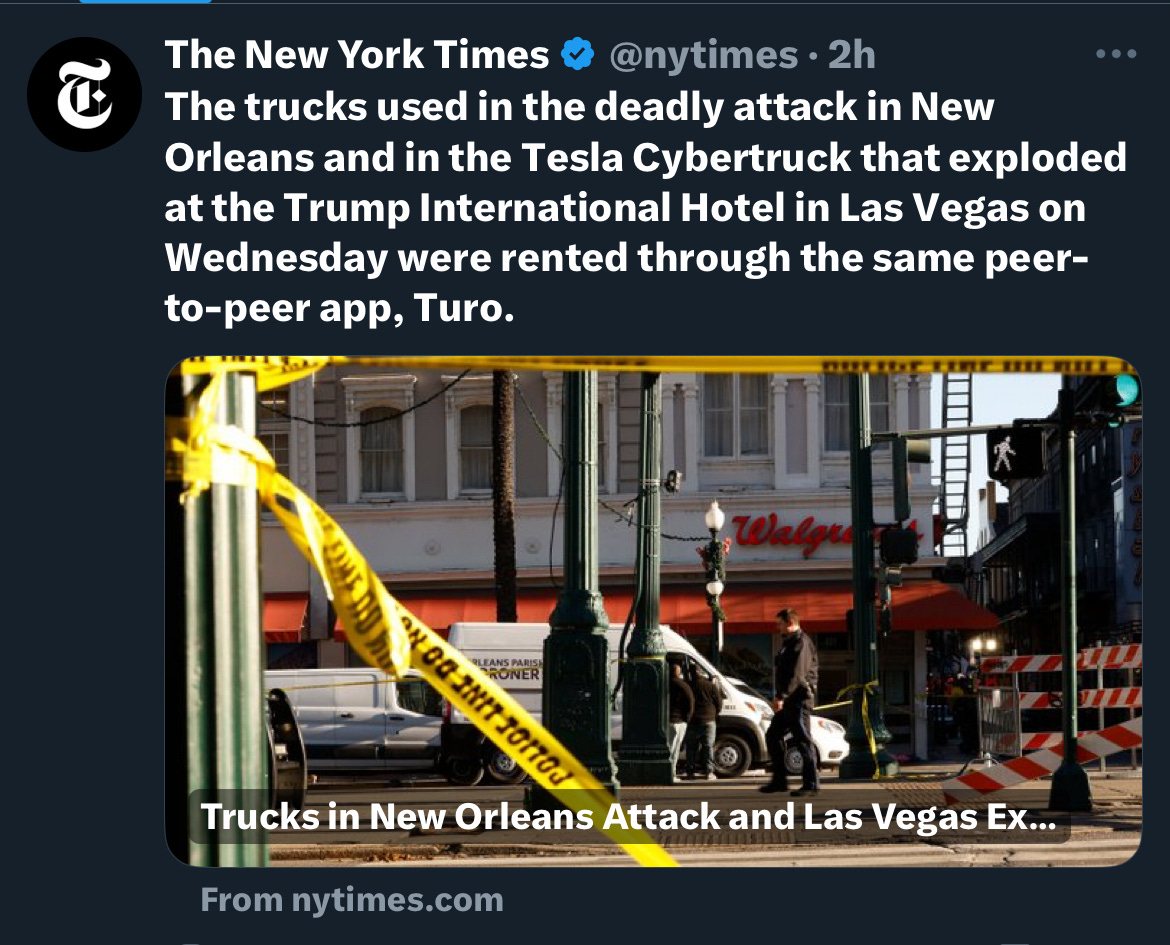Convergence of Domestic Terrorism, Veterans' Issues, and National Security
"The situation is evolving rapidly" - President Biden's words echo the complexities of America's latest terrorist challenge
The dawn of 2025 brought tragedy to America’s shores as New Orleans, a city renowned for its vibrant culture and resilience, became the site of what may be one of the deadliest terrorist attacks on U.S. soil in recent years. The incident, which claimed 15 lives and left 35 injured, along with a concurrent explosion at Trump International Hotel in Las Vegas, highlighted a complex web of security challenges that intersect with domestic terrorism, veteran affairs, and the evolving nature of terrorist threats in the United States.
The primary incident in New Orleans, where former U.S. Army veteran Shamsud-Din Jabbar allegedly drove a pickup truck Ford D-150 into a New Year’s crowd, before exiting the vehicle and opening fire on responding officers. This represents a troubling convergence of domestic radicalization and the broader international terrorist narrative. FBI investigations revealed that Jabbar, who served 13 years in the military including deployment in Afghanistan, had recorded videos claiming inspiration from the Islamic State (IS) before the attack. This development adds another layer to the already complex landscape of domestic terrorism in the United States.
The timing and nature of these attacks warrant deeper analysis, particularly as they occurred simultaneously with another incident at the Trump International Hotel in Las Vegas, where a Tesla Cybertruck explosion resulted in one death and seven injuries. While federal authorities have not definitively linked the two events, their concurrent timing and similar modus operandi – both vehicles were rented through the same platform, Turo – raise significant questions about coordination and the evolution of terrorist tactics.
The attacks bring several critical issues into sharp focus. First, they highlight the ongoing challenge of veteran radicalization in the United States. Jabbar’s profile as a former service member who spent over a decade in the military, including time in Afghanistan, points to deeper systemic issues regarding veteran support and reintegration into civilian life. Court documents revealed his significant financial struggles, including mortgage arrears of $27,000 and credit card debt of $16,000, painting a picture of personal crisis that may have contributed to his radicalization.
The role of social media and online radicalization also emerges as a crucial element in this case. Jabbar’s pre-attack videos and social media presence suggest a deliberate effort to align himself with IS ideology, even though initial investigations indicate he may have been acting as a “lone wolf” inspired by, rather than directly connected to, the terrorist organization. This pattern reflects a growing trend in modern terrorism where individuals self-radicalize through online content while maintaining minimal direct contact with established terrorist networks.
The geographical and symbolic significance of the targets merits attention. New Orleans, celebrating its New Year festivities, represents the kind of soft target that terrorist organizations have increasingly favoured. The concurrent attack at Trump International Hotel in Las Vegas adds a political dimension, given the property's connection to former and incoming President Donald Trump. The choice of targets suggests a sophisticated understanding of both maximum casualty potential and symbolic impact.
The immediate political response to these events reflects the deeply polarized nature of American society. Former President Trump’s initial reaction, suggesting the perpetrator was an immigrant, was quickly contradicted by facts showing Jabbar was American-born. This immediate politicization of the tragedy highlights how terrorist incidents can be weaponized in domestic political discourse, potentially complicating both the immediate response and longer-term counterterrorism efforts.
The technological aspects of these attacks also deserve scrutiny. The use of rental vehicles obtained through a digital platform points to the evolving nature of terrorist tactics and the challenges of preventing such attacks. Elon Musk’s comments about the Tesla Cybertruck’s blast-resistant properties, while potentially accurate from an engineering perspective, underscore the complex intersection of commercial technology and security concerns. His comments underscore broader concerns about how advanced vehicle technologies can be misused in terrorist activities. The broader implications for American counterterrorism strategy are significant. The fact that both attacks occurred on New Year’s Day suggests careful planning and coordination, even if the two incidents prove to be unrelated. The FBI’s approach to investigating these incidents as potential acts of terrorism while maintaining careful public messaging demonstrates the delicate balance between public safety and avoiding panic or prejudice.
On the international dimension, if confirmed as IS-inspired, this would represent the deadliest such attack on U.S. soil in recent years. This raises questions about the continuing influence of international terrorist organizations, even as their physical presence in regions like Syria and Iraq has diminished. The ability of these groups to inspire attacks through ideological influence rather than direct operational control presents a distinct challenge for counterterrorism efforts.
Looking forward, these events may prompt a reassessment of several key areas of U.S. security policy. The intersection of veteran care, mental health support, and counterterrorism efforts may need to be more closely examined. The role of social media platforms in radicalization and the responsibilities of digital services like vehicle rental platforms in security screening may face renewed scrutiny.
The incidents also raise questions about the effectiveness of current deradicalization programs and support systems for veterans. The fact that someone who served in the U.S. military for 13 years could become radicalized to the point of carrying out such an attack suggests potential gaps in both veteran support systems and counter-radicalization efforts.
Food for Thought:
How can societies better balance the need for accessible services like vehicle rentals with security concerns in an age of evolving terrorist tactics?
What role should mental health and financial support systems play in preventing veteran radicalization, and how can these be improved?
How can counterterrorism strategies adapt to address the growing phenomenon of “inspired” rather than “directed” terrorist attacks?
What implications do these events have for the intersection of domestic and international terrorism in an increasingly connected world?





